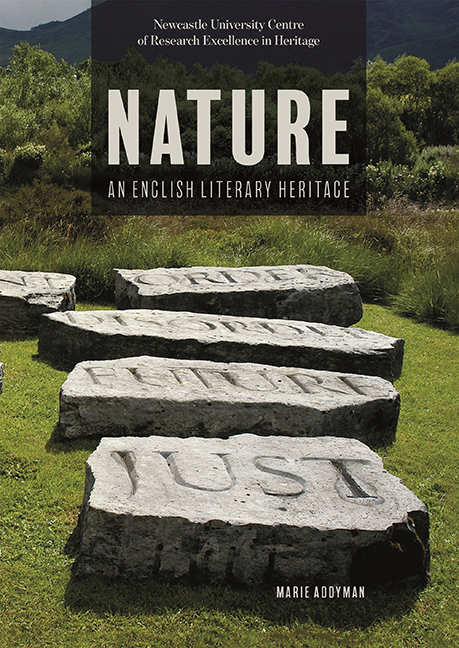Book contents
- Frontmatter
- Dedication
- Contents
- Acknowledgements
- Preface
- Introduction: Infected Minds
- I Nature as (A)morality and Mortality in Early Modern England
- II Living the Wild Life in the Nineteenth Century
- III Nature and History: Towards the Anthropocene
- Afterword: Apokalypsis
- Bibliography
- Index
- Previous Titles
7 - The Existentialist’s Pilgrimage
Published online by Cambridge University Press: 11 June 2021
- Frontmatter
- Dedication
- Contents
- Acknowledgements
- Preface
- Introduction: Infected Minds
- I Nature as (A)morality and Mortality in Early Modern England
- II Living the Wild Life in the Nineteenth Century
- III Nature and History: Towards the Anthropocene
- Afterword: Apokalypsis
- Bibliography
- Index
- Previous Titles
Summary
REBELLION IN THE PLAYGROUND
When publicity material in the Lake District encourages the tourist to ‘stand where he has stood’, with Wordsworth as the poetic example to be followed, it is offering a fixed view of the countryside as scenery or landscape, tacitly referring the word ‘landscape’ to its roots in art, a static painting to be gazed at as an outsider (Andrews 1999; Schama 1995; Pavord 2016). This is offered emphatically as a positive experience to the visiting onlooker who is able to ‘get the picture’. So this is not standing still as the pain of bearing unsparing witness to the actualities of the human condition within nature, as it is for Shakespeare's Edgar in Lear; and it is not stasis as despair or alienation of the self from external nature, as it is for Coleridge in the Dejection Ode. But it is Coleridge, of all the Romantic writers, who is offered by Karl and Hamalian as precursor in the collection of existentialist fiction they put together initially in 1963 (1973, 12). And by the time we come to W G Sebald's The Rings of Saturn (1995), discussed below, stasis is the delayed, paralysed reaction to the horror of the human condition to which walking through the landscape of its history has given rise.
Sebald's walk may offer a moral education, but it is no longer that resolute and ultimately joyful allegorical walk through the trials offered by both man and nature in this world which leads, as it had led the ardent Puritan John Bunyan (1628–88), to a vision of eternity. When Bunyan's Christian says to one of his many tempters,
‘You make me afraid, but whither shall I fly to be safe? … I must venture; To go back is nothing but death; to go forward is fear of death, and life everlasting beyond it. I will yet go forward.’ (Bunyan, ed Harrison 1954, 45; The Pilgrim's Progress)
the allegorical landscape he traverses leads with absolute certainty to an immortal future of bliss, as the reward of keeping to the one true path. But in the existentialist strand of writing in the late twentieth century, here exemplified by Sebald, such certain belief in the consolation of a positive ultimate goal is no longer possible.
- Type
- Chapter
- Information
- Nature: An English Literary Heritage , pp. 213 - 232Publisher: Boydell & BrewerPrint publication year: 2021



